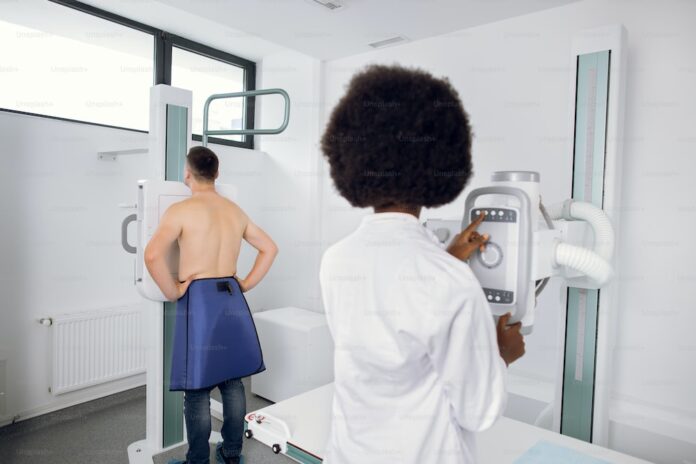Medical X-rays play a crucial role in diagnosing and monitoring various health conditions. If your healthcare provider has recommended an X-ray examination, it’s important to be well-informed and prepared for the procedure. This blog post will discuss key factors you should consider and important information you need to know before going for a medical X-ray service from experts like Prpimaging.com.au. By understanding the process, risks, and necessary precautions, you can ensure a safe and efficient experience while undergoing X-ray imaging.
Understanding X-rays and their Purpose
X-rays are a form of electromagnetic radiation that can penetrate the human body to create images of the internal structures, such as bones and organs. They are commonly used to diagnose fractures, infections, tumors, and other medical conditions. It’s important to understand that X-rays involve exposure to radiation, although the amount is generally considered safe when used in controlled medical settings. By providing valuable diagnostic information, X-rays help healthcare professionals make informed decisions regarding your treatment and care.
Communicate with Your Healthcare Provider
Before your X-ray appointment, have a detailed discussion with your healthcare provider. Make sure to inform them about any existing health conditions, allergies, or medications you are currently taking. This information is crucial as it may affect the imaging process or require additional precautions. If you are pregnant or suspect you might be, inform your healthcare provider, as X-rays may pose risks to the developing fetus. Open communication ensures that your healthcare team can tailor the procedure to your specific needs and minimize any potential risks.
Preparing for the X-ray Procedure
In most cases, X-rays do not require extensive preparation. However, depending on the area being examined, you may be asked to wear a hospital gown and remove jewelry or metallic objects that could interfere with the imaging. It’s important to follow any instructions provided by your healthcare provider or the imaging facility to ensure accurate results.
Radiation Safety and Protection
Radiation exposure during X-rays is generally considered safe, but precautions should still be taken to minimize unnecessary exposure. Medical professionals who perform X-rays are trained to use the lowest radiation dose necessary to obtain clear images. They may use shielding, such as lead aprons or collars, to protect parts of your body not being imaged. If you have concerns about radiation exposure, discuss them with your healthcare provider.
Potential Risks and Benefits
X-rays involve a minimal amount of radiation, and the benefits of obtaining accurate diagnostic information often outweigh the potential risks. However, it’s important to be aware that excessive exposure to radiation over time can have cumulative effects. Therefore, it’s essential to limit unnecessary X-rays and avoid duplicate examinations when possible. Discuss any concerns about radiation exposure with your healthcare provider to ensure the benefits of the procedure outweigh the potential risks.
Conclusion
Before undergoing a medical X-ray service, it’s crucial to educate yourself about the process, risks, and necessary precautions. By understanding the purpose of X-rays, communicating effectively with your healthcare provider, and following the necessary preparations, you can ensure a safe and effective imaging experience. Remember to discuss any concerns or questions you may have with your healthcare provider to address them adequately. By being well-informed, you can actively participate in your healthcare decisions and contribute to achieving accurate diagnoses and appropriate treatment plans.
Read Also
- Ketamine-Assisted Therapies: Impacts on Employee WellbeingWorkplace stress is common today. Many employees feel tired, anxious, or burned out. Regular therapy can help, but some people need more support. Ketamine-assisted therapy is showing good results for mental health. A ketamine-assisted therapist guides each session safely. This therapy can improve mood, focus, and energy. Learning more about it can help teams stay… Read more: Ketamine-Assisted Therapies: Impacts on Employee Wellbeing
- The Future of Men’s Health: Why Telehealth Is Here to StayTelehealth isn’t just a pandemic trend that faded into the background. For Australian men, it has become one of the most practical, time-saving, and stress-free ways to manage everyday health — and it’s shaping the future of how we access care. Platforms like DOCTO, an Australian online doctor and specialist telehealth service, are leading the… Read more: The Future of Men’s Health: Why Telehealth Is Here to Stay
- How to Build a Simple, Clean Skincare Routine ?You don’t need a complicated skincare routine. It doesn’t have to be something that requires twenty different products and confusing steps. Your routine works well with just a few high-quality clean ingredients. The beauty industry keeps pushing more products, but your skin actually needs less. You only need a simple approach to get better results… Read more: How to Build a Simple, Clean Skincare Routine ?
- How Preventive Dental Care Supports Overall HealthHave you ever wondered how a simple dental checkup could impact your entire body? Oral health is more than just a bright smile. Studies show that poor dental habits can contribute to serious health problems. Gum disease and tooth decay are linked to heart disease, diabetes, and infections. Yet, many people overlook preventive dental care.… Read more: How Preventive Dental Care Supports Overall Health
- Seeing Clearly in a High-Tech World: A Deep Dive into Advanced Vision Care ServicesProtecting your eyesight isn’t optional—it’s essential. Modern eye care has evolved far beyond basic exams, offering advanced diagnostics, personalized treatments, and surgical innovations that keep vision sharp for life. A leading example is Intermountain Eye Center, home to specialists like Dr Fishburn Boise, where patients receive comprehensive, high-level vision care designed to preserve long-term eye… Read more: Seeing Clearly in a High-Tech World: A Deep Dive into Advanced Vision Care Services
- Why the Keto Diet Works for Some People—and Fails Dramatically for Others: An Ayurvedic Breakdown for Modern HealthcareThe keto diet has dominated weight-loss culture for years. For some people, it produces rapid fat loss, stable energy, and improved mental clarity. For others—especially those who gain weight easily—it leads to burnout, digestive distress, rebound weight gain, high cholesterol, and a metabolism that feels slower than before. Healthcare often frames this as a discipline… Read more: Why the Keto Diet Works for Some People—and Fails Dramatically for Others: An Ayurvedic Breakdown for Modern Healthcare







